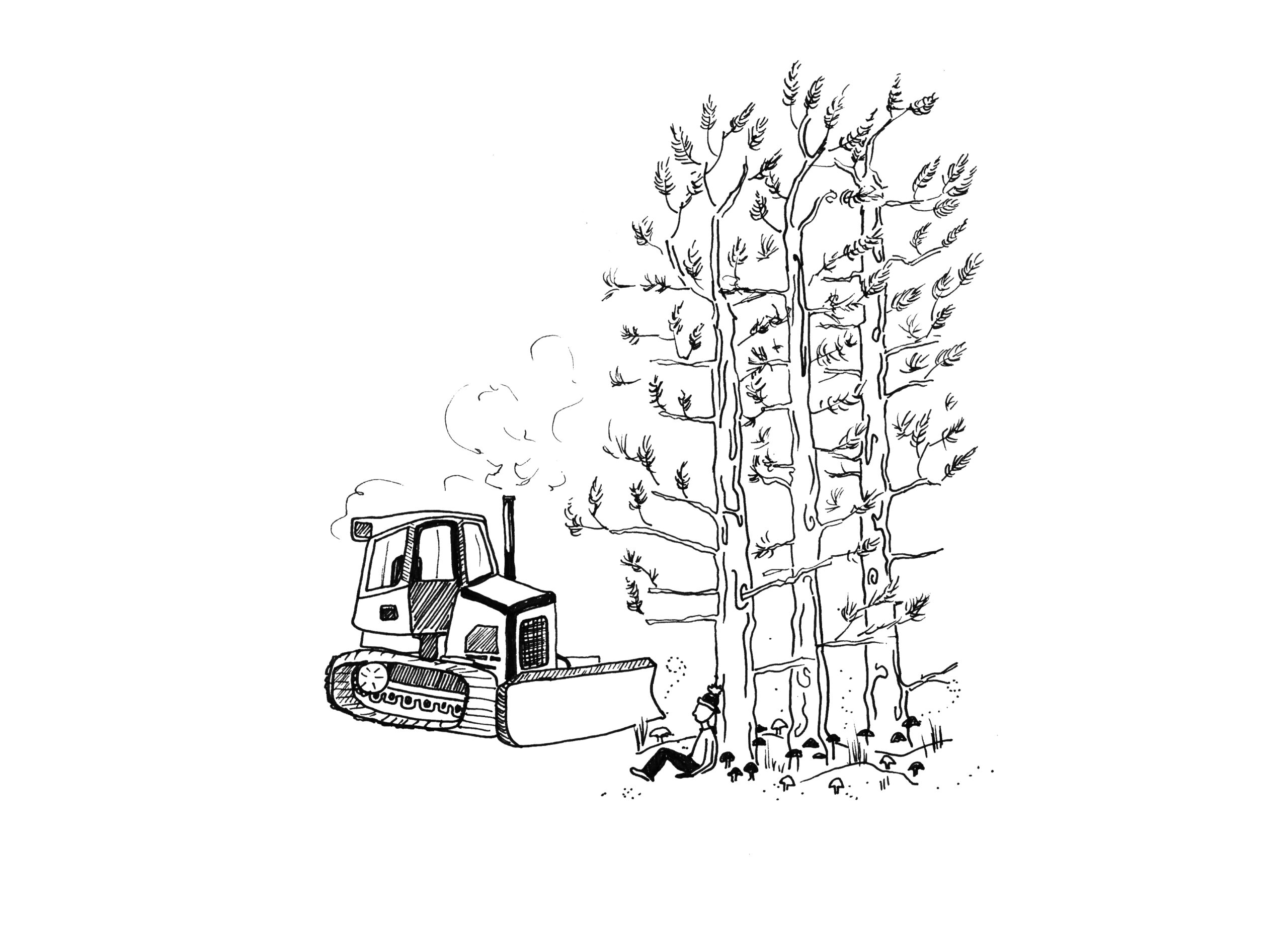What about the pines?
February 1, 2019
 This
piece represents the opinion of the author
.
This
piece represents the opinion of the author
.
 Sophie Washington
Sophie WashingtonOn Monday, Bowdoin’s Administration announced plans for the construction of two new buildings, Barry Mills Hall and the Center for Arctic Studies. Fitted with “state-of-the-art academic facilities,” President Rose is confident that these additions will “play a significant role in enhancing Bowdoin education.” The Bowdoin website, in their announcement, included a map of campus indicating the location of the new buildings. The location is a grassy patch between Dudley Coe and the Druckenmiller parking lot, a grassy patch that I have never seen before, and neither have you.
A letter to the editor written earlier this year lamented the loss of Pine Street’s namesake trees, and I could not sympathize more. During my first year at Bowdoin, I was drawn to the shady path past the cemetery and the treetops filled with the breathy trills of pine warblers. Once these apartments were a scenic escape tucked away in the evergreens. This is no longer.
Those of us on campus in the fall of 2017 vividly remember the carnage on the quad: centuries-old oaks felled and sidewalk concrete ripped up with them after the blackout storm. Though tragic, this came as no surprise to me, for these trees are living on borrowed time. An observant student walking campus in late-September may notice large clumps of mushroom sprouting from the oaks’ bases. While my annual harvest of these “Hens of the Woods” has become a tradition, my mushroom carbonara comes at quite the cost to the trees, who have the distinct pleasure of being devoured inside-out by a fungus. Nearly every one of Bowdoin’s ancient oaks are infected with this pathogen, and, sooner or later, they all will fall. This is, of course, only the natural fate of trees, but leaving this impending doom unacknowledged does nothing for our current situation. To expedite the senescence of our campus groves with these development plans seems almost cruel.
Look closely—Pine Street, the Roux Center, Park Row and now Barry Mills Hall and the Arctic Studies Center—the face of campus is perhaps shifting faster than you may think. This, coupled with our rotting oaks and multiple new facilities taking down the forests at the Coastal Studies Center, presents a very real threat to our beautiful quad and coastal woods. Despite their haste, these developments creep in our peripheral vision, fading in just as our memories of furrowed trunks and soft piles of pine needles fade out. Since I applied, Bowdoin has always advertised itself as a “green” school, with glossy photos of Outing Club trips covering our brochures, and now with the Roux Center and all of the glory and progress it represents. But advertisements, as a rule, should never be wholly trusted.
If our campus wishes to improve itself, then by all means it should, but bear in mind there are more ways to do it than that most dreaded “land development.”
Instead of making yet another new classroom, improve upon the many others that dot our campus and invest in the academic programs themselves and not simply their physical spot on campus. Begin planting the towering maples of tomorrow. And no, I do not need nor even want a room in Roux with eight (yes, EIGHT) TVs, but rather desire a breezy spot in the shade to do my work. Give me sturdy foundations that root me to the earth yet propel me to the divine and leaves that cradle within them the hearts of poets and the prose of biochemistry, for that may just be what a liberal arts education is about.

Comments
Before submitting a comment, please review our comment policy. Some key points from the policy: